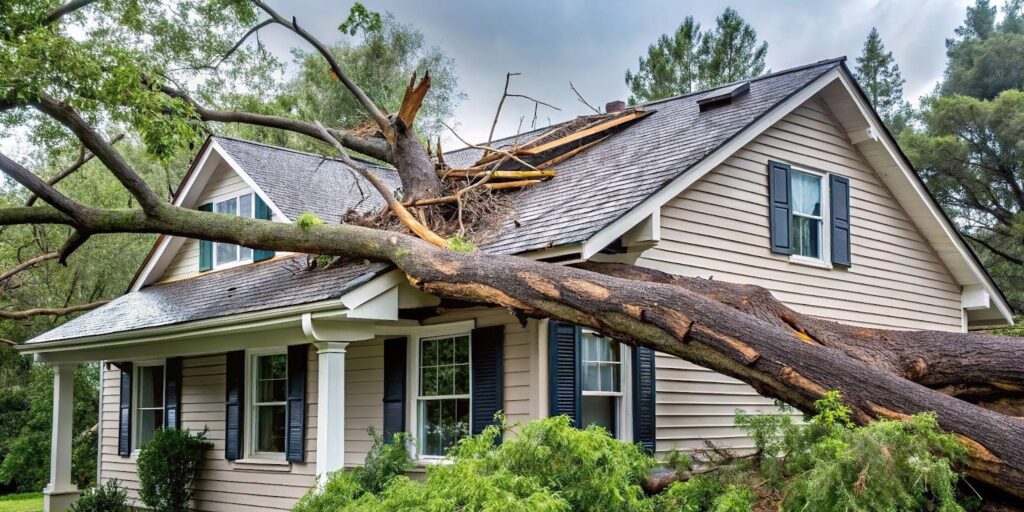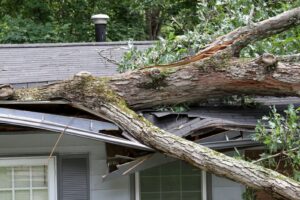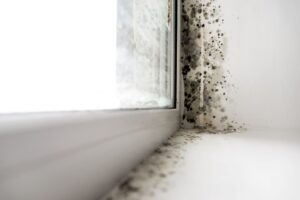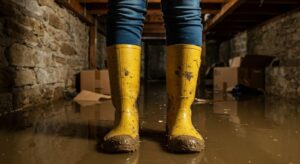Preparing for storm damage repairs helps you restore your home faster, minimize stress, and prevent further issues. Taking proactive steps ensures you can assess damage accurately, secure your property, and work efficiently with insurance and restoration professionals.
By acting quickly, you protect your home from worsening damage, speed up the claims process, and ensure repairs meet safety standards. This guide provides expert tips on evaluating damage, filing insurance claims, and choosing the right restoration team. With the right approach, you can rebuild with confidence and safeguard your home from future storms.
Assessing the damage
Inspect your home carefully before starting repairs to determine the full extent of storm damage. Wear protective gear, check for hazards like downed power lines or gas leaks, and avoid unstable structures.
Start with an exterior inspection. Look for missing shingles, cracked siding, broken windows, and any debris that may have impacted the structure. Examine the roof for leaks or sagging areas that indicate water intrusion. Inside, check ceilings and walls for stains, warping, or peeling paint—signs of hidden moisture damage.
Check for water damage and mold risks. Inspect basements, crawl spaces, and flooring for cracks, pooling water, or musty odors. Mold can grow within 24-48 hours of water exposure, so act quickly to dry out affected areas.
Document everything with clear photos and detailed notes. Recording damage thoroughly speeds up insurance claims and ensures restoration professionals address all necessary repairs. A careful assessment helps you recover faster and prevents future problems.
Documenting damage for insurance claims
Documenting storm damage thoroughly helps speed up your insurance claim and ensures fair compensation. Capture clear photos and videos of all affected areas. Take wide shots for context and close-ups of structural damage, roof leaks, water intrusion, and broken windows. Photograph damaged furniture, flooring, appliances, and personal belongings to create a complete record.
List damaged items with descriptions, estimated values, and purchase dates. Include model numbers and serial codes for electronics and major appliances. Providing detailed information helps your insurance adjuster assess replacement costs accurately.
Save receipts for emergency repairs and temporary living expenses. If you pay for tarps, window boarding, hotel stays, or meals due to displacement, keep all receipts. Many insurance policies reimburse these costs under additional living expenses (ALE) coverage.
Store all records in one place. Back up digital copies of photos, videos, receipts, and claim-related emails in a secure cloud folder. Keeping organized documentation prevents delays and helps you navigate the claims process smoothly.
Contacting your insurance provider
Call your insurance provider immediately to report storm damage. Provide your policy number, describe the extent of the damage, and ask about the next steps. Filing your claim early speeds up the approval process and prevents repair delays.
Review your policy to confirm coverage details. Check whether it includes structural repairs, personal property replacement, and additional living expenses (ALE). Clarify deductibles, payout limits, and required documentation to avoid claim processing issues.
Meet with the insurance adjuster to assess repair costs. Walk them through the damage, show photos and videos, and present an inventory of affected belongings. Point out emergency repairs you completed to prevent further damage. Thorough documentation ensures a smoother claims process.
Track your claim’s progress and follow up regularly. Keep records of emails, claim numbers, and adjuster reports. Ask questions to ensure a fair settlement and push for a timely resolution. Staying proactive helps you recover faster and avoids unnecessary delays.
Securing your home before repairs begin
Take immediate action to protect your home from further damage. Secure vulnerable areas to prevent water intrusion, structural issues, and additional repair costs.
Cover roof leaks and board up broken windows to keep out rain, wind, and debris. Use heavy-duty tarps to seal damaged sections of the roof and secure them tightly to prevent leaks. Nail plywood over shattered windows to block moisture and deter intruders. These quick fixes help preserve your home’s interior and limit further weather-related destruction.
Clear debris and remove fallen trees to prevent additional hazards. Check the area for unstable structures before moving large branches or scattered materials. If a tree has fallen on your home, call a professional for safe removal. Avoid using chainsaws near damaged structures, as sudden shifts can cause collapses or injuries.
Place sandbags and temporary barriers to stop flooding. If heavy rain threatens your home, stack sandbags around doors, windows, and low-lying areas. Use plastic sheeting or flood barriers to redirect water away from your property. These precautions help prevent additional water damage before restoration begins.
Choosing the right restoration professionals
Hiring experienced storm damage repair specialists ensures a smooth recovery process. Work with professionals who can restore your home safely and efficiently.
Verify licensing and insurance before hiring a restoration company. Licensed contractors follow industry standards, and insurance coverage protects you from liability. Check your credentials to ensure you receive quality service.
Research reviews, certifications, and experience to assess a company’s reputation. Read customer testimonials, request references, and look for certifications like IICRC. A strong track record in storm damage restoration indicates reliability and expertise.
Clarify service timelines and expectations before signing a contract. Request a detailed estimate outlining repair costs and completion time. Confirm which services they provide, such as water extraction, structural repairs, and mold remediation. Knowing the scope of work prevents delays and keeps the process on track.
Choosing the right professionals speeds up restoration, ensures safety, and protects your home from further damage.
Preparing for the repair process
Taking proactive steps before repairs begin allows contractors to work efficiently and helps restore your home faster.
Clear personal belongings from damaged areas to give workers easy access. Move furniture, valuables, and fragile items to a safe space to prevent further damage. If repairs require extensive work, relocate important documents, electronics, and clothing.
Plan for temporary living arrangements if your home becomes unsafe or unlivable. Stay with family, find a short-term rental, or check if your insurance covers hotel stays under additional living expenses (ALE). Preparing ahead prevents last-minute disruptions.
Communicate with contractors to set clear timelines. Discuss the repair schedule, potential delays, and the scope of work. Stay involved by checking in regularly to ensure progress stays on track and avoid unexpected issues.
Proper preparation speeds up repairs, protects your belongings, and keeps the process stress-free.
Addressing water damage and mold prevention
Water damage creates the perfect environment for mold growth, making fast action essential. Dry out affected areas immediately to prevent further issues.
Use dehumidifiers and fans to remove excess moisture. Set up high-powered fans and commercial-grade dehumidifiers to speed up drying. If possible, open windows and doors to improve airflow and reduce humidity levels.
Inspect walls, ceilings, and floors for hidden moisture. Water seeps into porous materials, leading to long-term structural damage and mold infestations. Use a moisture meter to detect trapped water behind drywall, under flooring, and inside insulation. Address any damp spots before they become bigger problems.
Ensure proper ventilation to keep humidity under control. Run exhaust fans in kitchens, bathrooms, and laundry rooms to reduce moisture buildup. If flooding occurs, consider installing a whole-home ventilation system to maintain dry indoor conditions and prevent mold growth.
Taking immediate action minimizes damage, protects your home’s structure, and ensures a safe, mold-free environment.
Preventing future storm damage
Reinforce your home to withstand severe weather. Install impact-resistant shingles, secure doors with heavy-duty hardware, and upgrade windows with stormproof glass. Strengthening these vulnerable areas reduces the risk of wind and water damage.
Improve drainage to prevent flooding. Clear gutters and downspouts to direct water away from the foundation. Grade your yard so rainwater flows away from your home, and install French drains or sump pumps in flood-prone areas. Use gravel, mulch, and water-absorbing plants to reduce excess moisture around your property.
Inspect and maintain your home regularly. Check the roof for loose shingles, seal cracks around doors and windows, and reinforce the foundation. Trim overhanging branches and remove dead trees to minimize storm hazards. Taking proactive measures lowers repair costs and keeps your home safe when storms hit.
Storm damage restoration by Total Flood and Fire Restoration
For expert storm damage restoration, trust Total Flood and Fire Restoration. Our certified team provides fast, reliable repairs, water mitigation, and mold prevention to restore your home safely. With advanced equipment and years of experience, we handle everything from emergency response to full reconstruction.
Contact Total Flood and Fire Restoration today for professional, hassle-free restoration services.








